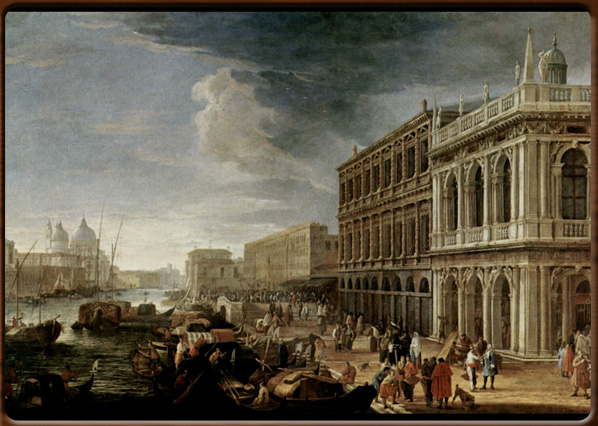
Riva degli Schiavoni towards Salute, Luca Carlevarijs, 1690-1720, Galleria Palazzo Corsini, Rome.

Regatta in honour of Frederic IV of Denmark and Norway, detail. Luca Carlevarijs, Frederiksborg, Nationalhistorisk Museum.


No video
Luca Carlevarijs (Udine, 1667 – Venice, 1730) was an Italian painter from an artistic family: his father, the architect and painter Giovanni Leonardo, let him move to Venice when just 16 in order to continue the family’s artistic vocation.
There he trained and made a name for himself.
In 1708 he joined the "Fraglia dei Pittori", an important guild and necessary in order to enter the Venetian art market. In fact, he started to produce many veduta and capriccio, harbour views, ancient ruins, mediaeval buildings, becoming the number one artist in this field until roughly 1720, when his follower Antonio Canal, (also said “Canaletto”), took over from him.
Carlevarijs met various important artists in Venice: Johann Anton Eismann of Germany in 1685 and Gaspar Van Wittel of Holland in 1694. These, together with a trip to Rome, were his greatest artistic influences, leading to a new style of landscape, which was a foretaste of the Venetian veduta style in the 1700s.
Carlevarjs represented Venice with documentary accuracy, drawing on his great knowledge of perspective and architecture, plus the use of mechanical instruments, such as the camera obscura.
He was also a water-colour painter, producing many engravings of Venetian views.
1600 - 1700 - - rev. 0.1.6